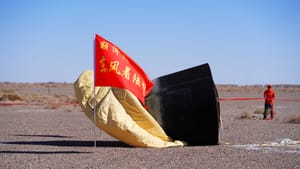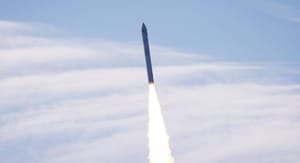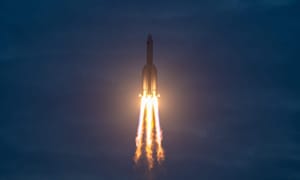
China's first reusable satellite, Shijian-19, returned to Earth on October 11th. According to the China National Space Administration, the Shijian-19 spacecraft's capsule touched down in the Dongfeng Landing Site, located inside the Inner Mongolia Autonomous Region, at 10:39 am China Standard Time, or 02:39 am Universal Coordinated Time.
Shijian-19 (实践十九号) was delivered into orbit a little over two weeks ago atop of a Long March 2D, flying from Launch Site 4 at the Jiuquan Satellite Launch Center. While in orbit, the spacecraft is reported to have run experiments with plant seeds, microorganism samples, technology demonstration devices, and experimental space instruments. The seeds flying onboard the spacecraft were provided by The Ministry of Agriculture and Rural Affairs, Hainan Province, and Anhui Province.
Some of these experiments were from international partners and nations, with Thailand and Pakistan being the only two mentioned. Cultural items were also onboard.
After landing in the Dongfeng Landing Site, teams began the recovery process for the numerous payloads onboard. Once the payloads were recovered and secure Shijian-19's capsule was also recovered, to be taken away for study and possible refurbishment ahead of another flight.

Following the successful touchdown, the China Academy of Space Technology, which developed the spacecraft, said the following as part of a celebratory blog post:
"The flight test made breakthroughs in key technologies such as reusability, non-destructive recovery, and high microgravity guarantee, and verified the technical indicators of the new generation of high-performance reusable and recoverable space test platforms, achieving the expected test results."
Prior to the Shijian-19 mission, China had flown thirty recoverable satellites, but none were reusable. This spacecraft is thought to be a demonstration mission ahead of launches of the fifth-generation Fanhui Shi Weixing (返回式卫星) recoverable satellites. These satellites will also perform experiments in orbit for durations as little as a few days to many months.
Microgravity experiments are also performed aboard the Tiangong Space Station but there are only three opportunities to launch experiments each year, with only two chances to return with the results six months apart. Some experiments may also want, or need, a more controlled environment not offered on the space station.
Advances with reusable satellites will likely help China’s various state-owned space contractors improve processes ahead of the refurbishment of Mengzhou capsules, as the in-development crewed spacecraft also has plans to be reused.



